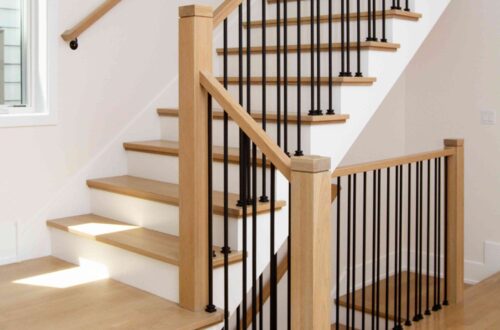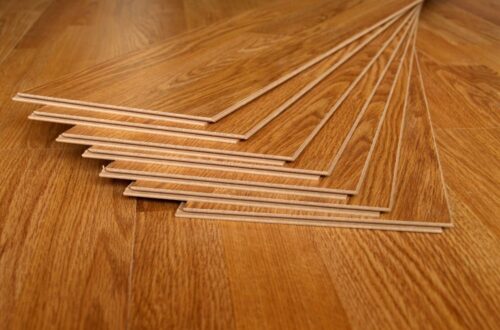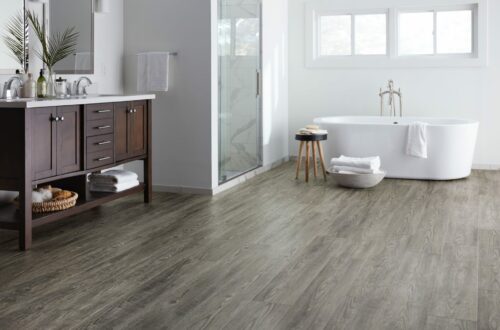
The Most Environmentally Friendly Flooring Options: A Comprehensive Guide
When it comes to flooring, homeowners and businesses alike are increasingly prioritizing sustainability and eco-friendliness. Choosing environmentally friendly flooring options not only reduces your carbon footprint but also promotes healthier indoor air quality and supports sustainable practices. This comprehensive guide explores the most environmentally friendly flooring materials, their benefits, and tips for selecting the best option for your needs.
Why Choose Eco-Friendly Flooring?
Environmental Impact
Conventional flooring materials often involve significant environmental costs, from deforestation and energy-intensive manufacturing to the release of harmful chemicals. Eco-friendly options minimize these impacts by utilizing sustainable resources, reducing waste, and promoting recycling.
Health Benefits
Many traditional flooring materials emit volatile organic compounds (VOCs) that can harm indoor air quality and pose health risks. Eco-friendly flooring options are often free from toxic chemicals, creating a healthier living environment.
Long-Term Savings
While some eco-friendly flooring options may have higher upfront costs, their durability and lower maintenance requirements often translate into long-term savings.
Top Environmentally Friendly Flooring Options
1. Bamboo Flooring
Bamboo is a fast-growing grass that regenerates quickly, making it a highly sustainable material. It’s durable, stylish, and available in a variety of finishes to suit different aesthetics.
- Pros: Rapid renewability, high durability, and modern appearance.
- Cons: Susceptible to moisture damage and may require careful sourcing to ensure sustainability certifications.
2. Cork Flooring
Cork is harvested from the bark of cork oak trees, which regenerate their bark after harvesting. This process does not harm the trees, making cork a renewable and sustainable material.
- Pros: Soft underfoot, excellent insulation properties, and antimicrobial qualities.
- Cons: Can be prone to dents and fading over time.
3. Reclaimed Wood Flooring
Using reclaimed wood repurposes materials from old buildings or furniture, reducing the demand for newly harvested timber.
- Pros: Unique character, reduced deforestation, and durable.
- Cons: Limited availability and may require refinishing.
4. Linoleum Flooring
Made from natural materials like linseed oil, cork dust, and wood flour, linoleum is biodegradable and long-lasting.
- Pros: Affordable, low maintenance, and available in various designs.
- Cons: Can be susceptible to moisture damage if not sealed properly.
5. Recycled Tile Flooring
Tiles made from recycled glass, porcelain, or ceramic are an excellent way to reduce waste while achieving a stylish look.
- Pros: Durable, water-resistant, and available in creative designs.
- Cons: High production costs can make them pricier than traditional tiles.
6. Wool Carpet
Wool is a natural, renewable resource that is biodegradable and offers excellent insulation.
- Pros: Soft, luxurious feel and good thermal insulation.
- Cons: Higher cost and requires regular maintenance.
7. Concrete Flooring
Polished concrete uses existing materials and minimizes the need for additional resources. It’s durable and has a sleek, industrial appearance.
- Pros: Extremely durable, low maintenance, and energy-efficient for temperature regulation.
- Cons: Can feel cold and hard underfoot.
8. Rubber Flooring
Rubber flooring made from recycled tires is a durable and eco-friendly option, especially for high-traffic areas.
- Pros: Long-lasting, slip-resistant, and comfortable.
- Cons: Limited design options and potential odor.
9. Engineered Wood Flooring
Engineered wood uses a veneer of real wood over a core made from recycled or sustainable materials, reducing the need for solid hardwood.
- Pros: Stylish, versatile, and often more sustainable than solid wood.
- Cons: May still involve some VOC emissions depending on the adhesive used.
Factors to Consider When Choosing Eco-Friendly Flooring
Certification and Standards
Look for certifications like:
- FSC (Forest Stewardship Council): Ensures responsible forest management.
- GREENGUARD: Certifies low chemical emissions.
- Cradle to Cradle: Assesses materials for safety and sustainability.
Lifecycle and Durability
Evaluate the product’s lifecycle to ensure it’s long-lasting and won’t require frequent replacement, which can offset its environmental benefits.
Maintenance Requirements
Consider how much energy, water, or chemicals are required to maintain the flooring.
Local Sourcing
Locally sourced materials reduce transportation emissions and support local economies.
Eco-Friendly Installation Practices
- Low-VOC Adhesives: Choose adhesives and finishes that emit little to no VOCs.
- Proper Subfloor Preparation: Ensure the subfloor is prepared to minimize waste during installation.
- Recycling Old Flooring: Dispose of old flooring responsibly by recycling or donating usable materials.
Future Trends in Sustainable Flooring
Innovative Materials
Emerging materials like hemp, mushroom-based composites, and algae are being explored as eco-friendly alternatives.
Smart Flooring
Technological advancements are integrating sustainability with smart features, such as energy-harvesting floors.
Circular Economy
Flooring companies are adopting circular economy practices, designing products that can be easily disassembled and recycled.
Conclusion
Choosing environmentally friendly flooring is a meaningful way to contribute to a more sustainable future. With options like bamboo, cork, reclaimed wood, and recycled tiles, there’s something to suit every style and budget. By considering factors such as certifications, lifecycle, and local sourcing, you can make informed decisions that align with your values and needs.
Investing in eco-friendly flooring not only benefits the planet but also enhances your living or working space with healthier, more sustainable materials. The next time you’re in the market for flooring, take the time to explore these eco-friendly options and play your part in fostering a greener tomorrow.




